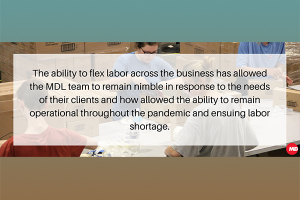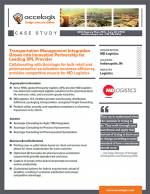The Ecommerce, Mcommerce and Omnichannel Effect
In this white paper, we take a complete look at how e-commerce, m-commerce, and omnichannel commerce are impacting traditional supply chain models.
Introduction
The Internet revolutionized how people form and foster relationships. For years, companies have sought to translate this unprecedented customer connectivity into business success.
Today, online and mobile commerce gives consumers the satisfaction of both a quick and effortless shopping experience and a variety of delivery options.
In turn, this has transformed how companies manage their supply chains, as inventory availability and shipping times severely influence customer purchase decisions.
To remain relevant, companies must understand these evolving trends and how they are transforming traditional supply chain solutions.
Background: When the World Went Online
e-Commerce, the process of buying or selling goods over the Internet, has altered how consumers shop. Instead of traveling to stores, they are comfortable buying and receiving products in the comfort of their homes, despite an occasional shipping expense.
In 1991, the National Science Foundation allowed commercial businesses to operate over the Internet for the first time. Companies immediately incorporated the Internet into their business models and the eCommerce revolution began.
After the turn of the century, the trend briefly plateaued as ill-conceived supply chain models landed some companies in bankruptcy. As a result, manufacturers and retailers took a step back to address logistics, privacy protection, and accessibility problems.
Today e-Commerce has grown into a giant income stream that is expected to generate more than $908 billion in U.S. sales by 2021. The COVID-19 pandemic fueled e-Commerce growth even more as the consumer’s shopped from the comfort of their homes amid stay-at-home orders. e-Commerce sales are anticipated to make up 15.5% of total retail sales in 2021, up from a pre-pandemic estimate of 13.2%.
While commerce conducted through desktop computers remains the preeminent choice for online shopping, the use of mobile devices has increased in recent years to make up 45% of the US ecommerce market.
Further Reading:
- Background: When the world went mobile
- Background: The rise of omni-channel commerce
- Solutions: The big picture effects of e-fulfillment
- Solutions: The small and significant supply chain impacts
- Conclusion
e-Commerce orders come in quickly and can rapidly overbear an inefficient process. In today’s fast-paced online shopping environment, being stagnant and unprepared will cause consumers to effortlessly take their business elsewhere.
The secret to mastering omni-channel logistics in the mobile world is a lean supply chain infrastructure that mitigates carrying costs and remains agile to logistics needs. MD Logistics specializes in helping customers develop customized fulfillment solutions. From special packaging needs to direct-to-consumer orders, MD Logistics offers seamless solutions that can help companies embrace the fluctuating industry.
What’s Related




Favorites





